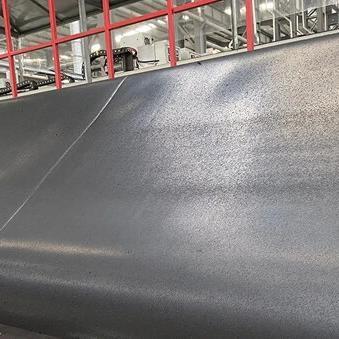Exploring the Benefits and Applications of HDPE Unidirectional Geogrid in Construction
Release time:
2025-07-27
HDPE unidirectional geogrid is a specialized polymer-based material that has gained significant traction in the construction and civil engineering sectors. Composed of high-density polyethylene (HDPE), this geogrid is designed to provide superior reinforcement and stabilization in various soil and aggregate applications. Its unidirectional design means that the geogrid is engineered to perform opt
HDPE unidirectional geogrid is a specialized polymer-based material that has gained significant traction in the construction and civil engineering sectors. Composed of high-density polyethylene (HDPE), this geogrid is designed to provide superior reinforcement and stabilization in various soil and aggregate applications. Its unidirectional design means that the geogrid is engineered to perform optimally in one direction, offering enhanced tensile strength where it is most needed.
One of the primary benefits of HDPE unidirectional geogrid is its ability to improve load distribution on soft or unstable soils. By integrating this geogrid into construction projects, engineers can effectively minimize soil deformation and failure, which is a common concern in infrastructure development. This results in increased stability and a longer lifespan for structures, making it a reliable choice for roads, retaining walls, and other heavy-load applications.
Another compelling advantage of HDPE unidirectional geogrid is its lightweight nature, which simplifies handling and installation processes. Unlike traditional reinforcement materials, this geogrid is easier to transport and place, leading to reduced labor time and costs on site. Additionally, its resistance to environmental factors such as UV radiation and chemical degradation ensures durability and longevity, ultimately reducing maintenance expenses.
In terms of applications, HDPE unidirectional geogrid is versatile. It finds its use in road and pavement design, where it enhances the structural capacity and performance of the pavement layers. The incorporation of this geogrid can significantly extend the life of roads by reducing pavement cracking and rutting. Furthermore, it is employed in slope stabilization, where it helps prevent erosion and landslides by reinforcing the soil and providing a stable foundation for vegetation.
In construction projects involving retaining walls or embankments, HDPE unidirectional geogrid can provide additional lateral support, preventing failures that might occur due to soil movement or water pressure. Its adaptability in various soil conditions allows for effective reinforcement even in challenging environments.
In summary, HDPE unidirectional geogrid is a game-changer in the construction industry, offering numerous benefits including enhanced load distribution, ease of installation, and durability. By leveraging the properties of this innovative material, construction professionals can improve the performance and reliability of their projects, ultimately leading to safer and more efficient infrastructure development. Understanding its role and applications is essential for making informed decisions that can significantly impact project outcomes.
One of the primary benefits of HDPE unidirectional geogrid is its ability to improve load distribution on soft or unstable soils. By integrating this geogrid into construction projects, engineers can effectively minimize soil deformation and failure, which is a common concern in infrastructure development. This results in increased stability and a longer lifespan for structures, making it a reliable choice for roads, retaining walls, and other heavy-load applications.
Another compelling advantage of HDPE unidirectional geogrid is its lightweight nature, which simplifies handling and installation processes. Unlike traditional reinforcement materials, this geogrid is easier to transport and place, leading to reduced labor time and costs on site. Additionally, its resistance to environmental factors such as UV radiation and chemical degradation ensures durability and longevity, ultimately reducing maintenance expenses.
In terms of applications, HDPE unidirectional geogrid is versatile. It finds its use in road and pavement design, where it enhances the structural capacity and performance of the pavement layers. The incorporation of this geogrid can significantly extend the life of roads by reducing pavement cracking and rutting. Furthermore, it is employed in slope stabilization, where it helps prevent erosion and landslides by reinforcing the soil and providing a stable foundation for vegetation.
In construction projects involving retaining walls or embankments, HDPE unidirectional geogrid can provide additional lateral support, preventing failures that might occur due to soil movement or water pressure. Its adaptability in various soil conditions allows for effective reinforcement even in challenging environments.
In summary, HDPE unidirectional geogrid is a game-changer in the construction industry, offering numerous benefits including enhanced load distribution, ease of installation, and durability. By leveraging the properties of this innovative material, construction professionals can improve the performance and reliability of their projects, ultimately leading to safer and more efficient infrastructure development. Understanding its role and applications is essential for making informed decisions that can significantly impact project outcomes.
Previous Page





